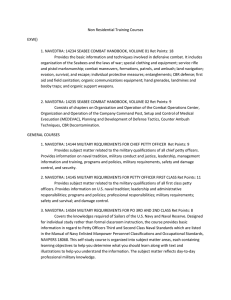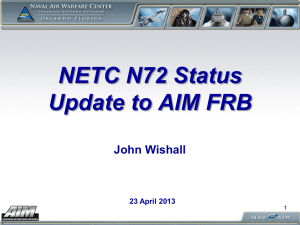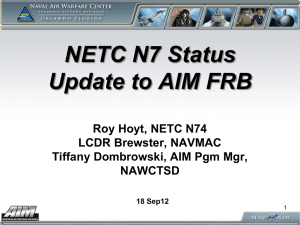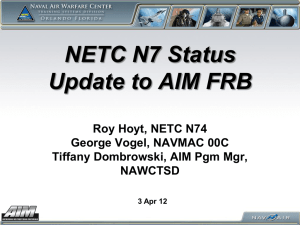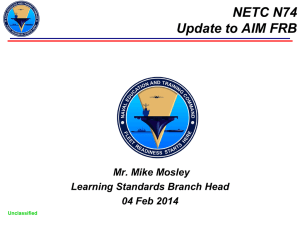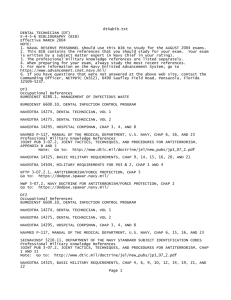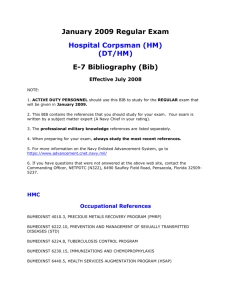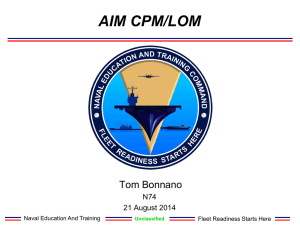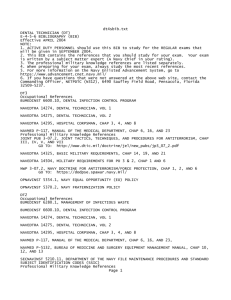AIM Implementation at New Activity
advertisement
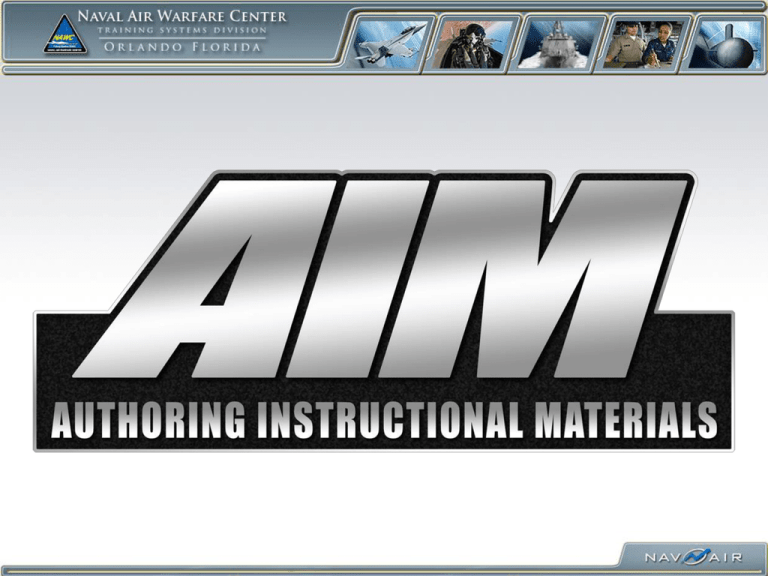
Authoring Instructional Materials (AIM) Implementing AIM at Your Activity – A General Approach Based on Lessons Learned March 2012 Tiffany Dombrowski AIM/CPM Program Manager NAWCTSD Orlando 407-380-4431 tiffany.dombrowski@Navy.mil Objective of Presentation • To begin to answer some questions you may have regarding AIM implementation at your activity including: – What is AIM? – Why should I use AIM? – What are the different AIM products and which should I use? – How should I approach implementation? What is AIM? • Government-owned & managed system of software tools used by the Navy to design, develop, update, manage, and integrate training content • Provides automated conformance to standards – NAVEDTRA 130B – AIM II – NAVEDTRA 131B – AIM I – NAVEDTRA 136/137 – CPM/LO Module Why should I Use AIM? • Links learning requirements to performance standards • Links learning content required resources including Interactive Electronic Tech Manuals (IETMs) (S1000D & other formats) • Automates identification and notification of potential learning content update requirements based on performance standard & tech data changes • Streamlines integration of changes into previous learning content baseline with minimum impact • Supports multiple output methods (paper, PDF, HTML, & SCORM conformant XML formats) Why should I Use AIM? (contd) • Automates new NETC Job Duty Task Analysis process • Facilitates design, development, and maintenance of blended learning content • AIM is a mature application & service provider supporting the development & sustainment of 250,000+ instructional hours of formal Navy training content • AIM has proven results and supports efficient, cost effective development & maintenance of learning content Which AIM Product Should I Use? • Traditional Navy Curriculum Development – AIM I supports NAVEDTRA 131 • Personnel Performance Profile (PPP)-based curriculum development • Traditionally used by Undersea, parts of Surface and some Engineering activities – AIM II supports NAVEDTRA 130 • Task-based curriculum development • Traditionally used by Air, part of Surface and most other activities • New Navy Curriculum Development – CPM/LO Module supports new Navy guidelines as reflected in NAVEDTRA 136 and NAVEDTRA 137 • CPM centrally hosted as Web-based enterprise planning tool • LO Module packaged with both AIM I and AIM II products • Supports reuse of traditional AIM content when re-authoring to meet new JDTA-based curriculum guidance Which AIM Product Should I Use? (contd) • Content Planning Module (CPM) is designed to: – Link Learning Objective to Job Duty Task Analysis Data (JDTA) per NAVEDTRA 137 – Link learning objectives to reusable Learning Objects – Provide the capability for populating important project and instructional design strategy information to assist with management of learning content development efforts – Enable linking skill data to existing traditional learning content Which AIM Product Should I Use? (contd) • Learning Object (LO) Module is designed to: – Fully develop and maintain instructor-led training content, based on CPM-generated, course outline of instruction per NAVEDTRA 136 and NAVEDTRA 137 – Automatically generate default metadata per NETC guidelines (Mar 2012) – Enable digital linking of granular learning content ‘chunks’ to pertinent Interactive Electronic Technical Manual (IETM) authoritative technical data – Support design and maintenance of self-paced content via interface with selected CBT tools Which AIM Product Should I Use? (contd) • So which do I use? – If you work for NETC, be sure to discuss with NETC N74 – CPM is mandated for generation of JDTA data for all new projects and LO Module is tightly integrated with CPM – CPM and LO Module are increasingly mature new tools, with a number of prototype projects currently underway to proof the new NAVEDTRA 136/137 business process they automate and to identify additional functional enhancements needed – There is much more experience with the traditional tool set but it has limits especially if a transition of content to self-paced E-learning is anticipated How should I approach implementation? • • Discuss CPM and LO Module implementation with the AIM team To implement traditional AIM: ‒ Course selection • • ‒ ‒ Develop short courses first to build expertise Sun-downing (do not convert courses scheduled to be canceled within 3 years) For initial projects get help from AIM team (in person or via web-meeting) early on in process Build an AIM guru for your activity • • • Send them to formal training Have them contact the AIM team for web-based assistance and follow-on training Have them represent you on the AIM Functional Requirements Board (FRB) Points of Contact / Website • Program Manager Tiffany Dombrowski 407-380-4431 tiffany.dombrowski@navy.mil • Contractor PM Jim Ferrall 703-494-1416 jferrall@aimereon.com • Software Help Desk Ron Zinnato 407-380-4667 ronald.zinnato@navy.mil • ISD Lead Jamie Stewart 757-481-2837 jstewart@aimereon.com Information Web page

